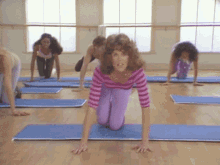Every so often, I've been writing short odes, notes of gratitude about life on the move. Some are about running, some adjacent to endurance sport, others are fleeting glimpses of serendipity.
Think of them as postcards from life in motion. I'm sharing them here, and maybe they'll spark something for you too. Thanks for reading.
You feel it: the slight twinge.
An unusual ache. The internal nervy groan of a limb tapping the mat. Suddenly that twinge is a jab, that ache a lightning stab. And … oh no. Are you limping?
Guess what? You’re dinged up!
Injury comes for us all.
We’re fragile creatures—errant assemblages of protein, bound together through eons of vicious, vituperative natural selection. Of tooth and nail and all that.
There’s a toughness in us, but it’s toughness born of fragility. Give us time and we’ll bounce back. We can suffer not only the slings and arrows of outrageous fortune, but also the fractures and bruises of woebegone physicality.
Still it sucks, to be dinged up. To deal with bone, tendon, and muscle, to attend to some random piece of sinew, whose existence you weren’t even aware of, now screaming alarm klaxons through your nervous system.
Fixing injury is annoying.
Not only must you figure out WHAT is injured, you then need to discern HOW to treat it. That means an annoying tour of Greek cognates usually reserved for pre-med majors: “medial”, “lateral”, “anterior”, “eccentric”, “isometric”, and on and on because weirdo anatomists during the Enlightenment had a classicist kink.
If you can’t tell by now, I’m dinged up.
Torn meniscus in the knee, the doctors say. And an MRI will confirm if surgery is needed. Hope is everlasting though. So every day, I’m doing strange little knee-stabilizing exercises with my legs and hips, like a Jane Fonda background extra.
These maneuvers always remind me how injury treatment remains bizarrely pre-modern. Options include subjecting the benighted body part to freezing ice. Radiating it with heat. Yanking at it with chiro. Or even applying electric current, needles, or suction as if you’re massaging out some minor demon or imp that’s taken up residence in your IT band.
In college, after workouts we used to plunge ourselves into baths of ice water. Theoretically, it reduced inflammation. But who knows if it did anything except increase the water bill for the athletic department.
I once looked around to see a dozen of us, scrawny runner-types, shivering in ice water up to our belly buttons. The pure silliness of human endeavor revealed itself to me in a thunderclap. All that grasping for excellence, all those Kipling stanzas about 60 seconds run, a whole culture of humanist hyperbole, and, in the end, we’re just arthritic little apes, trudging through tendonitis.
We are mere humanity.
Eventually, there’s an injury with an inflection. A before and an after.
Even legends have their turning points. Frank Shorter thinks he was never quite the same after fracturing the navicular bone in his left ankle. “I was dinged,” the gold-medallist marathoner writes in his memoir. “As the Hawaiians say, this was my Big Kahuna.”
Of course, because Shorter is amazing, this didn’t stop him from getting a silver medal at the next Olympics (losing only to an East German doper). Point being, even the greatest runners recognize their own finitude.
I suppose the Big Kahuna comes for us all in the end.
I hope my current knee issue isn’t mine. But if it is, so it goes. One of the glorious wonders of existence is that injury does not necessarily mean ending—just growth interrupted. Or redirected.
Despite our injuries, there are almost always new ways to direct ourselves. If we can’t run, we can bike. Can’t bike? Go for a walk. Can’t walk? Lift some weights. And barring everything, our shattered bodies can almost always take up a pen and put our thoughts in writing.
For what else can we do?
I find beauty and hope in this idea of the alternative. Perhaps this is what injury teaches. Yes, we learn humility, of course: we’re humbled by our weakness and mortality.
We also learn how to change. Our fractures and strains are moments of reconsideration. Breaks where we shift course, hopefully for the better.
Maybe some day we’ll look back, scar tissue and all, and we’ll be grateful for where we’ve been, and happier for where we ended.
Recently from Footnotes
Tweets of the week
Parting thought
The man’s body is sacred and the woman’s body is sacred,
No matter who it is, it is sacred—is it the meanest one in the laborers’ gang?
Is it one of the dull-faced immigrants just landed on the wharf?
Each belongs here or anywhere just as much as the well-off, just as much as you,
Each has his or her place in the procession.










“I find beauty and hope in this idea of the alternative. Perhaps this is what injury teaches. Yes, we learn humility, of course: we’re humbled by our weakness and mortality.”
Haven’t been able to get my Achilles/calf right for six months and really appreciate this. I pivoted into more strength training pretty quickly when I needed to stop running and am starting to attempt some calisthenics stuff which has been fun. Still missing the hills but I love the beauty, hope and humility in this!
I needed this article! Struggling with stress injury in left leg and swollen achilles in right. No running for months, now just elliptical, stationary bike and PT. This gives me some needed perspective. :)